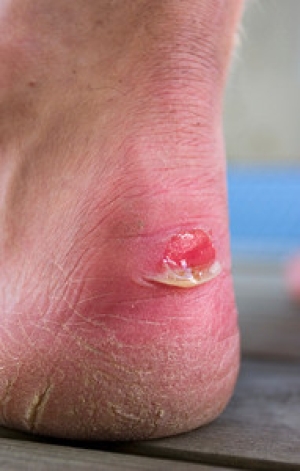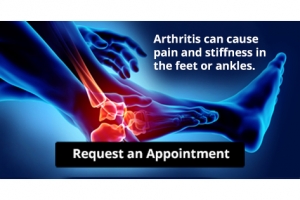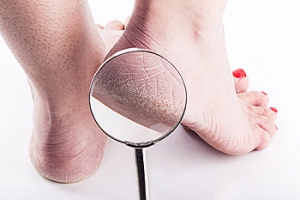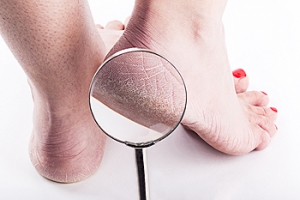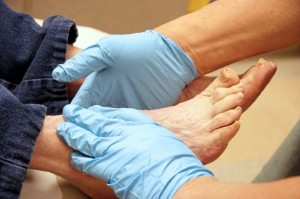Items filtered by date: July 2019
Blisters
Blisters are small pockets of fluid that occur on the top layers of the skin for several reasons. Friction, burns, and diseases are all known causes of blisters. Smaller blisters are known as vesicles, while larger blisters are referred to as bulla. The fluid inside the bubble can be blood, pus, or serum; which is a clear liquid that protects the skin. In most cases, blisters are not a major health issue, but they can be an indicator of a more serious condition.
Causes of blisters vary. Blisters are commonly caused by wearing poorly fitted shoes that rub against the foot. However, there are many other causes besides from friction; including burns, sunburn, insect bites, frostbite, poison ivy/oak, chemical exposure, impetigo, eczema, viral infections, and more.
Most blisters heal by themselves and do not require immediate medical care. If you have a blister, do not pop it since this may cause infection; it is advised to put a bandage over the blister to protect it. If the blister is large, causes pain, or if you have a fever, it is recommended that you see a doctor who can provide proper care. Blisters are easy to diagnose, and if considered prudent by the doctor, can easily be drained of fluid with a sterile needle as well.
To prevent blisters on the feet, wear shoes that fit properly and don’t cause rubbing. Socks can help prevent friction and it is recommended that you wear them if you are wearing shoes. Hand blisters can be avoided by wearing gloves during activities that cause friction against the hand. If you have a blister that pops, do not remove the dead skin, wash the area, apply antibiotic ointment, and cover with a bandage. It is okay in most cases to not seek immediate medical care for a blister if it was just caused by friction. However, if the blister causes pain or does not go away, it is suggested that you see a doctor for a diagnosis.
Why Do Blisters Develop?
 Many people who enjoy running and hiking can experience unpleasant blisters forming on their feet. This is often a result of friction that happens from the shoes or socks rubbing against the skin. The first layer of skin will typically become damaged, and a small pocket of fluid will form over the raw area. This acts as a natural barrier for protection, and will gradually drain as the healing process occurs. A successful measure that can be implemented which can help to prevent painful blisters from developing can include wearing shoes and socks that fit correctly. This will help in making sure there is adequate room so the heel does not rub on the back of the shoe. If the blister should become injured and drain before the skin has healed, an infection may occur. If this occurs, it is important to cover the affected area with a bandage until the skin has completely healed. If you are frequently getting foot blisters, it is advised to speak to a podiatrist who can guide you toward proper shoe fitting.
Many people who enjoy running and hiking can experience unpleasant blisters forming on their feet. This is often a result of friction that happens from the shoes or socks rubbing against the skin. The first layer of skin will typically become damaged, and a small pocket of fluid will form over the raw area. This acts as a natural barrier for protection, and will gradually drain as the healing process occurs. A successful measure that can be implemented which can help to prevent painful blisters from developing can include wearing shoes and socks that fit correctly. This will help in making sure there is adequate room so the heel does not rub on the back of the shoe. If the blister should become injured and drain before the skin has healed, an infection may occur. If this occurs, it is important to cover the affected area with a bandage until the skin has completely healed. If you are frequently getting foot blisters, it is advised to speak to a podiatrist who can guide you toward proper shoe fitting.
Blisters are prone to making everyday activities extremely uncomfortable. If your feet are hurting, contact Dr. Kenneth Donovan of Advanced Care Foot and Ankle. Our doctor can provide the care you need to keep you pain-free and on your feet.
Foot Blisters
Foot blisters develop as a result of constantly wearing tight or ill-fitting footwear. This happens due to the constant rubbing from the shoe, which can often lead to pain.
What Are Foot Blisters?
A foot blister is a small fluid-filled pocket that forms on the upper-most layer of the skin. Blisters are filled with clear fluid and can lead to blood drainage or pus if the area becomes infected.
How Do Blisters Form?
Blisters on the feet are often the result of constant friction of skin and material, usually by shoe rubbing. Walking in sandals, boots, or shoes that don’t fit properly for long periods of time can result in a blister. Having consistent foot moisture and humidity can easily lead to blister formation.
Prevention & Treatment
It is important to properly care for the affected area in order to prevent infection and ease the pain. Do not lance the blister and use a Band-Aid to provide pain relief. Also, be sure to keep your feet dry and wear proper fitting shoes. If you see blood or pus in a blister, seek assistance from a podiatrist.
If you have any questions, please feel free to contact one of our offices located in Warren, Livingston, and Toms River, NJ . We offer the newest diagnostic and treatment technologies for all your foot care needs.
Arthritis Can Cause Pain in the Feet and Ankles
If you are suffering from tenderness, pain, or stiffness in the joints of your feet or ankles, call us to schedule an appointment.
Solutions for Cracked Heels
Cracked heels may make you want to think twice about showing off your feet in warmer weather. However, cracked heels may be harmful to more than just the appearance of your feet. If deep fissures and cracks develop in your heels, they may make walking and standing painful for you. Additionally, these openings make way for germs to enter through your skin and cause infection.
There are several different causes of cracked heels. One of the most common reasons for this ailment is dry skin. This problem may make your keeps feel rough tight and itchy. Dry skin may be caused by cold air, extremely hot water, harsh soaps, and aging. Skin disorders such as eczema and psoriasis may eventually lead to dry skin. In some cases, complications may arise from cracked heels. Some of these complications are a loss of feeling in the heel, cellulitis, or a diabetic foot ulcer.
There are ways you can try to prevent getting cracked heels. One of the best ways to do so is to avoid wearing flip flops and sandals because these shoes increase your risk of drying out your feet. You should also avoid wearing shoes with a tall skinny heel, because these shoes cause your heel to expand sideways. At night, you should slather on a thick moisturizing cream on your feet and then cover them in socks to keep your feet moisturized overnight. Drinking water to stay hydrated is also a good way to ensure that your skin doesn’t become dry.
If you suffer from a severe case of cracked feet, you should make an appointment with your podiatrist to see what treatment methods are best for you.
Possible Causes of Cracked Heels
The medical condition that is referred to as cracked heels originates from having extremely dry skin on the heel area of the foot. This can come from standing for extended periods of time throughout the day, or from having certain medical conditions that may include psoriasis. Many people who are overweight experience cracked heels, as a result of the added weight the feet must endure. Additionally, if open back shoes are frequently worn, this condition may develop due to inadequate support these types of shoes provide. The symptoms that are often associated with this ailment include a thickening of skin on the outside of the heel. The skin may turn a dark brown or yellowish color, and cracks in the skin can develop as weight is placed on the heel. This affliction can cause severe pain and discomfort. Mild relief may be found when the feet are washed and dried daily, followed by thoroughly moisturizing them. If you have developed cracked heels, it is advised to consult with a podiatrist who can guide you toward healing and prevention techniques.
If the skin on your feet starts to crack, you may want to see a podiatrist to find treatment. If you have any concerns, contact Dr. Kenneth Donovan from Advanced Care Foot and Ankle. Our doctor can provide the care you need to keep you pain-free and on your feet.
Cracked Heels
It is important to moisturize your cracked heels in order to prevent pain, bleeding, and infection. The reason cracked heels form is because the skin on the foot is too dry to support the immense pressure placed on them. When the foot expands, the dry skin on the foot begins to split.
Ways to Help Heal Them
- Invest in a good foot cream
- Try Using Petroleum Jelly
- Ease up on Soaps
- Drink Plenty of Water
Ways to Prevent Cracked Heels
- Moisturize After Showering
- Skip a Shower
- Keep Shower Water Lukewarm
- Don’t Scrub Your Feet
If you are unsure how to proceed in treating cracked heels, seek guidance from a podiatrist.
Your doctor will help you with any questions or information you may need.
If you have any questions, please feel free to contact one of our offices located in Warren, Livingston, and Toms River, NJ. We offer the newest diagnostic and treatment technologies for all your foot care needs.
Solutions for Cracked Heels
Cracked heels may make you want to think twice about showing off your feet in warmer weather. However, cracked heels may be harmful to more than just the appearance of your feet. If deep fissures and cracks develop in your heels, they may make walking and standing painful for you. Additionally, these openings make way for germs to enter through your skin and cause infection.
There are several different causes of cracked heels. One of the most common reasons for this ailment is dry skin. This problem may make your keeps feel rough tight and itchy. Dry skin may be caused by cold air, extremely hot water, harsh soaps, and aging. Skin disorders such as eczema and psoriasis may eventually lead to dry skin. In some cases, complications may arise from cracked heels. Some of these complications are a loss of feeling in the heel, cellulitis, or a diabetic foot ulcer.
There are ways you can try to prevent getting cracked heels. One of the best ways to do so is to avoid wearing flip flops and sandals because these shoes increase your risk of drying out your feet. You should also avoid wearing shoes with a tall skinny heel, because these shoes cause your heel to expand sideways. At night, you should slather on a thick moisturizing cream on your feet and then cover them in socks to keep your feet moisturized overnight. Drinking water to stay hydrated is also a good way to ensure that your skin doesn’t become dry.
If you suffer from a severe case of cracked feet, you should make an appointment with your podiatrist to see what treatment methods are best for you.
Possible Causes of Cracked Heels
 The medical condition that is referred to as cracked heels originates from having extremely dry skin on the heel area of the foot. This can come from standing for extended periods of time throughout the day, or from having certain medical conditions that may include psoriasis. Many people who are overweight experience cracked heels, as a result of the added weight the feet must endure. Additionally, if open back shoes are frequently worn, this condition may develop due to inadequate support these types of shoes provide. The symptoms that are often associated with this ailment include a thickening of skin on the outside of the heel. The skin may turn a dark brown or yellowish color, and cracks in the skin can develop as weight is placed on the heel. This affliction can cause severe pain and discomfort. Mild relief may be found when the feet are washed and dried daily, followed by thoroughly moisturizing them. If you have developed cracked heels, it is advised to consult with a podiatrist who can guide you toward healing and prevention techniques.
The medical condition that is referred to as cracked heels originates from having extremely dry skin on the heel area of the foot. This can come from standing for extended periods of time throughout the day, or from having certain medical conditions that may include psoriasis. Many people who are overweight experience cracked heels, as a result of the added weight the feet must endure. Additionally, if open back shoes are frequently worn, this condition may develop due to inadequate support these types of shoes provide. The symptoms that are often associated with this ailment include a thickening of skin on the outside of the heel. The skin may turn a dark brown or yellowish color, and cracks in the skin can develop as weight is placed on the heel. This affliction can cause severe pain and discomfort. Mild relief may be found when the feet are washed and dried daily, followed by thoroughly moisturizing them. If you have developed cracked heels, it is advised to consult with a podiatrist who can guide you toward healing and prevention techniques.
If the skin on your feet starts to crack, you may want to see a podiatrist to find treatment. If you have any concerns, contact Dr. Kenneth Donovan from Advanced Care Foot and Ankle. Our doctor can provide the care you need to keep you pain-free and on your feet.
Cracked Heels
It is important to moisturize your cracked heels in order to prevent pain, bleeding, and infection. The reason cracked heels form is because the skin on the foot is too dry to support the immense pressure placed on them. When the foot expands, the dry skin on the foot begins to split.
Ways to Help Heal Them
- Invest in a good foot cream
- Try Using Petroleum Jelly
- Ease up on Soaps
- Drink Plenty of Water
Ways to Prevent Cracked Heels
- Moisturize After Showering
- Skip a Shower
- Keep Shower Water Lukewarm
- Don’t Scrub Your Feet
If you are unsure how to proceed in treating cracked heels, seek guidance from a podiatrist. Your doctor will help you with any questions or information you may need.
If you have any questions, please feel free to contact one of our offices located in Warren, Livingston, and Toms River, NJ . We offer the newest diagnostic and treatment technologies for all your foot care needs.
Diabetic Limb Salvage
Limb salvage is a procedure that involves saving a lower extremity from amputation. In podiatry, limb amputation often occurs as a result of diabetes. The fundamental goal of limb salvage is to restore and maintain stability and movement of the affected lower extremity.
The procedure typically involves removing the diseased tissue and a small portion of the surrounding healthy tissue, as well as the removal of any affected bone if necessary. If bone is removed it is then replaced with prostheses, or synthetic metal rods or plates, or grafts from either the patient’s body or a donor. Limb salvage is typically the preferred choice of procedure over amputation, as the procedure preserves both the patient’s appearance and allows for the greatest possible degree of function in the affected limb.
Upon diagnosis and determining that limb salvage is the appropriate treatment, the podiatrist may enlist the help of a physical and/or occupational therapist to prepare the patient for surgery by introducing various muscle-strengthening, walking, and range of motion exercises. Such exercises may be continued as rehabilitation post-procedure.
Feet Tips For Diabetics
Diabetics are at increased risk for foot complications, as many diabetics have reduced blood flow and damaged nerves. There are a few measures to take to protect your feet. First, examine your feet daily. If you cannot see your feet completely, use a mirror or have someone assist you. Look for cuts, discoloration, and sores. Make sure your toenails are cut and filed as well. Additionally, do not walk barefoot. You should assure that the lining on your shoes and socks are smooth before wearing them. Another step to remember is to avoid subjecting your feet to extreme temperatures. Check showers or bodies of water before entering. When possible, elevate your legs and wiggle your toes in order to help your circulation. Remembering these tips could prevent amputation, or even life-threatening complications. Diabetics should be going to a podiatrist twice a year for an exam, as well as speaking with a podiatrist when questions arise.
Diabetic Limb Salvage
Diabetic limb salvage can be an effective way in preventing the need for limb amputation. If you have a foot ulcer and diabetes, consult with Dr. Kenneth Donovan from Advanced Care Foot and Ankle. Our doctor will assess your condition and provide you with quality foot and ankle treatment.
What Is Diabetic Limb Salvage?
Diabetic limb salvage is the attempt of saving a limb, such as the foot, that has an infected ulcer, from amputation. Podiatrists also try to make sure that there is enough function in the foot after the salvage that it is still usable. Those with diabetes experience poor blood circulation, which prevents proper healing of an ulcer. If the ulcer is left uncheck, it could become infected, which could result in the need for amputation.
Diabetes is the number one cause of non-traumatic amputations in the United States. Amputation has been found to lead to higher mortality rates. This translates into higher healthcare costs, and a reduced quality of life and mobility for amputees. Podiatrists have attempted to increase the prevalence of limb salvage in an attempt to solve these issues.
Diagnosis and Treatment
Limb salvage teams have grown in recent years that utilize a number of different treatments to save the infected limb. This includes podiatrists that specialize in wound care, rehabilitation, orthotics, and surgery. Through a combination of these methods, limb salvage has been found to be an effective treatment for infected limbs, and as an alternative to amputation. Podiatrists will first evaluate the potential for limb salvage and determine if the limb can be saved or must be amputated.
If you have any questions, please feel free to contact one of our offices located in Warren, Livingston, and Toms River, NJ. We offer the newest diagnostic and treatment technologies for all your foot care needs.
